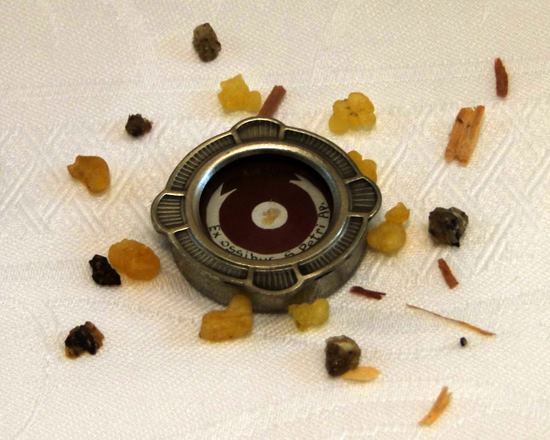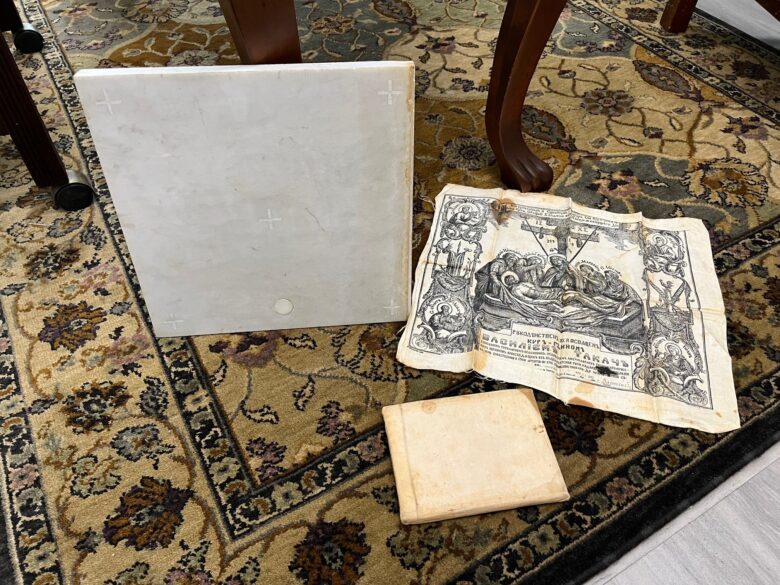From the Archives
By Mary Woodward
JACKSON – I had a dear friend who moved to a retirement compound (as he called it) when he was in his late 80s. When I would ask him how things were going at the “compound,” he would say: “you mean life among the relics?”
Most people when they hear the term archive think of old stuff, and indeed there is a lot of old stuff in the historical archive vault at the chancery in Jackson. Our diocesan historical archive holds records and documents dating back to the early 1700s.

Let me add a disclaimer here: The diocesan archive is not open to the public. It is a small room holding official records of the diocese. It is not a library or museum that can be toured. The archive does not exist to provide genealogical research or assist in getting dual Italian citizenship. We will help with that for a fee when we have time. The records in the archive are not “secret;” it just is not public in the way you would check out a book in a library. The archive collection is open to qualified researchers doing professional research on church history for dissertations and publications.
Last week, I received a familiar email from a parishioner on the Gulf Coast wanting to know the saint’s relic in the altar of his church. The church was dedicated in 1951, so it was before the date we were split into two dioceses.
This is a common request, and we often are able to provide an answer, because of the Official Acts books we have dating back to 1924 and the diaries of Bishops.
In this case, although I was able to tell him that Bishop Gerow dedicated the church on Palm Sunday, and it rained buckets all day; I could only give possibilities of who the relic might be since this fact was not mentioned in the official acts book’s recording of the church and altar being dedicated.
I was able to tell him the relic would most likely be from either Sts. Victor, Modesta, Maximus, Maxima or Sergius – all martyrs. The reason this information was available was because a few pages before the church’s dedication listing in the acts book, there is an entry stating the bishop consecrated a myriad of altar stones containing those relics.
These marble stones measure 13 inches squares and would have been used in mission churches established throughout the diocese to be placed in wooden altars that would have a square cut out of the top in which the stone would be placed. I don’t know why 13 inches, but maybe it is because the stones would have come from Italy and 17 is the unlucky number there, not 13.
In each stone there is a small cut out circle in which a relic or several relics would be sealed along with three grains of incense. As mentioned in the acts book, several stones could be consecrated at a time and stored until needed.

Another reason for this hypothesis of who the saint might be is there is a relics drawer in the archive with an old container marked “relics for altars” and the names of the saints are listed on a piece of paper with the container. Therefore, whether the church had a full marble mensa or just a stone, these relics were set aside for that purpose. This container and its contents are very fragile, so we do not handle it anymore.
We do have a unique altar stone in our collection. It is small – five inches x seven inches – and encased in a linen cloth. This stone was issued to Rev. Peter Quinn in 1943 for use on the battlefields in Europe during World War II. Father Quinn was a chaplain in the army and served on the front lines in one of General George Patton’s divisions making its way to Germany. The stone came with a Greek corporal, which has a relic sewn into it. On a similar note, Bishop William Houck used a Greek corporal as part of his travelling Mass kit and on the small altar he had in a chapel in his home. We have that in the vault as well.
As you can see, we do have some interesting artifacts in our archive collection at the diocese. Perhaps one day we can develop an exhibition for people to see, but for now I’ll keep sharing some interesting snippets of life among the relics highlighting various discoveries in the drawers and cabinets in the vault.
(Mary Woodward is Chancellor and Archivist for the Diocese of Jackson.)
